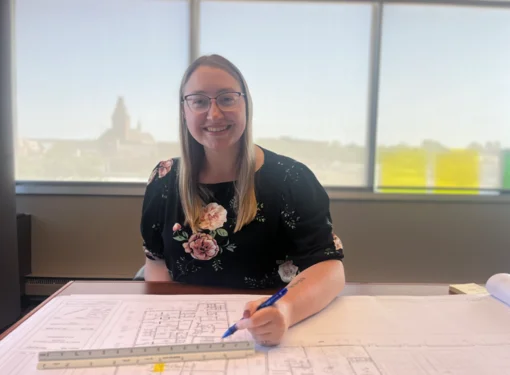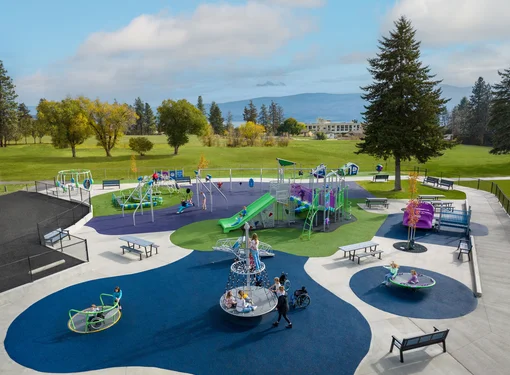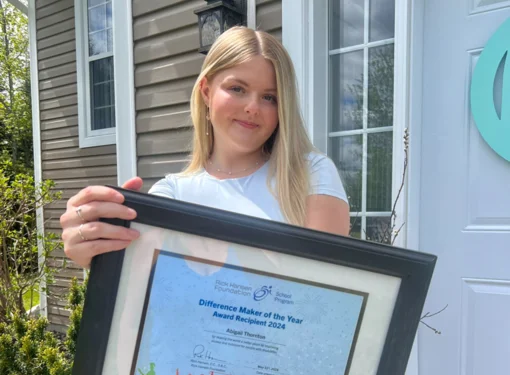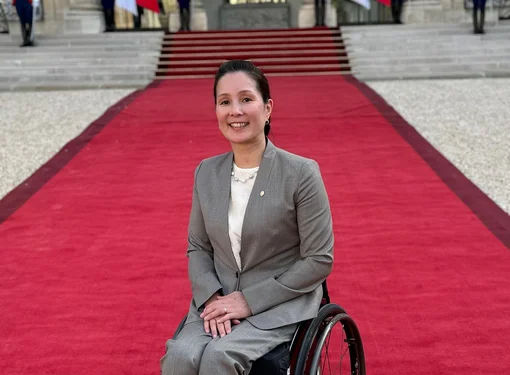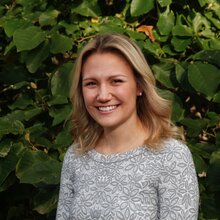Murray Roddis’ Journey to a New Career in Accessibility
Murray Roddis had two reasons for taking the Rick Hansen Foundation Accessibility Certification™(RHFAC) Training course – first, his wife’s experiences, having lost a leg in 2013 and a stroke that led her to use a wheelchair in 2016, left Roddis looking for a way to help those with disabilities navigate the built environment; and, second, after 42 years as a surveyor, measuring everything from highway interchanges to IndyCar’s, Roddis wanted a way to quantify accessibility.
RHFAC Training provided him with both.
In 2016, when Roddis’ wife had a stroke, the two started to face accessibility issues and wanted a solution. They started a company, Access4Disabilities, which seeks to “assist persons with disabilities by dismantling the physical, systemic, technological and social barriers that exist in our communities.”
“I thought that if I had a certification of some kind it would help me talk to people about accessibility and the built environment,” Roddis explained.
The Measurement System
When Roddis and his wife were starting Access4Disabilities, measuring access was something they wanted to look into: they were struggling to find a way to quantify access. So, when Roddis came across RHFAC, he said the course “was a perfect fit” for what he was looking for.
One of the pieces of RHFAC Training that drew Roddis in the most was that it is a measurement tool. After years of analyzing highways, and a handful of years measuring parts for IndyCars to precision to get them across the finish line the quickest, a clear and repeatable measurement system appealed to Roddis.
“When I learned more about the Rick Hansen Foundation Accessibility Certification program, I realized it was repeatable,” Roddis said. “It doesn’t matter which professional measures a facility, you will end up within 1 or 2 percent of the same value. That is something I could really get behind.”
Taking the RHFAC Training Course
“I have learning disabilities, and I failed every grade except grades one and two in school,” Roddis explained. “The online course with the three-dimensional learning was the exact solution for me to grasp 100 percent of the content. It was exactly what I needed.”
Beyond the learning style, the course overall was an incredible experience for Roddis.
“The course helps you understand and look at the built environment from so many different perspectives and disabilities,”
Roddis explained. “That’s what I loved most about the experience.”
Since becoming an RHFAC Professional, Roddis has left surveying behind and now consults on buildings full time.
Capstone Development in Red Deer
Roddis’ favourite project to work on to date was the local development of Capstone in Red Deer, Alberta.
The development is a vibrant, healthy and inclusive neighbourhood. Roddis explained that the City really welcomed him and his ideas in.
“As accessibility in my life was brought into bold focus after my wife suffered a stroke that left her paralyzed on her left side, it was the design of the curb ramps that brought the 'aha!' moment,” Roddis explained.
Roddis worked with the Capstone Project Engineer to demonstrate that when an individual only has mobility on one side of the body, surmounting a barrier such as a 20mm transition from gutter to curb would be near impossible.
Roddis was invited to participate in the design of the next phase of the engineering development in Capstone earlier in 2022.
The neighbourhood development achieved RHFAC Gold.
The Future of Accessibility
“I’m just excited,” Roddis said. “There is a whole economy emerging in accessibility. When you think about it, nearly a quarter of Canadians identify as having a disability, and if we improve the built environment, so many more people can participate fully. It speaks to the fact that our GDP could improve if we could include all these individuals in our economy.”

